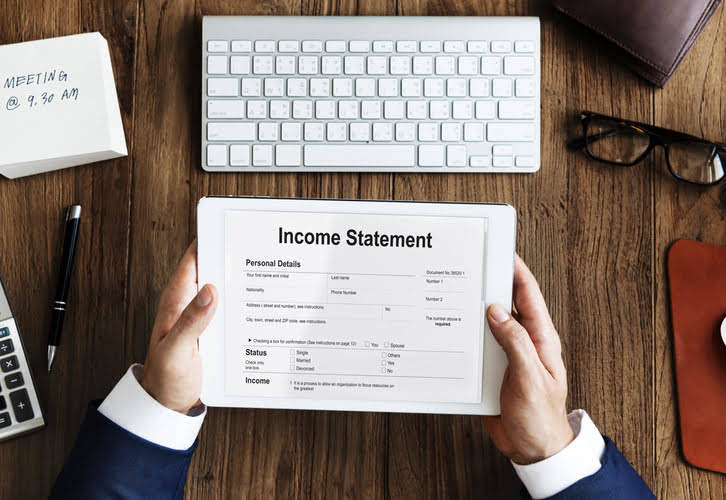How the leases standard impacts company balance sheets Global

There are several types of business bank accounts, each with its own purpose and benefits. The accrual accounting method records financial transactions when they occur rather than when cash exchanges hands. Because companies invest in assets to fulfill their mission, you must develop an intuitive understanding of what they are. Without this knowledge, it can be challenging to understand the balance sheet and other financial documents that speak to a company’s health. Ensuring an accurate book balance can help companies manage the monthly cash flow activities, which includes cash coming in and cash being paid out from the company. IFRS 16 has also had an impact on debt, as additional liabilities are recognized for leases that were previously off balance sheet.

What you need to set up small business bookkeeping
Balance sheets serve two very different purposes depending on the audience reviewing them. Book balance refers to the total amount of funds in an account, as recorded on a company’s financial records. A bank balance is the ending cash balance appearing on the bank statement for a bank account. The bank balance can also be derived at any time when an inquiry is made regarding the bank’s record of the cash balance in an account. The term book balance, which is also used in the bank reconciliation is the amount shown in the company’s general ledger for the bank account.
Must-know terms for bookkeeping

Reconciling items, such as bank errors or timing differences, are then reviewed to ensure their impact on the book balance is accurately reflected. The net effect of these adjustments is calculated to arrive at the reconciled book balance, which forms a vital component in the preparation of financial statements. The components of book balance include assets, liabilities, and equity, which collectively form the basis of a company’s financial statement. Accounting entries made at the end of an accounting period to update account balances before preparing financial statements. The opposite is true when the total credit exceeds total debits, the account indicates a credit balance. If the debit/credit totals are equal, the balances are considered zeroed out.
Intermediate Financial Accounting I
The main drawback is the potential for human error in recording transactions, which can lead to discrepancies and inconsistencies. The need for regular reconciliation can be time-consuming and resource-intensive, adding complexity to financial processes. Book balance offers advantages such as accurate financial oversight and reporting, but it also presents challenges related to potential errors and the need for continuous reconciliation. An illustrative example of book balance calculation involves the aggregation Accounting Periods and Methods of all credit and debit transactions, followed by adjustments for accruals and reconciling items to derive the final book balance. Book balance can be categorized into positive book balance, indicating a surplus of funds, and negative book balance, signifying a deficit or overdraft situation.
- However, maintaining accurate financial records is key to your business’s success.
- Understanding your AR can also help you set efficient credit terms for your customers.
- After you have a bookkeeping system in mind, the next step is to pick an accounting software.
- This process ensures that the general ledger accurately reflects the actual financial position of an organization by comparing the transactions recorded in the company’s books with those in the bank statements.
- Explore our online finance and accounting courses, which can teach you the key financial concepts you need to understand business performance and potential.
By keeping track of every dollar you spend, you can gain insight into where your money is going and make informed decisions about allocating your resources. Tracking your AR, usually with an aging report, can help you avoid issues with collecting payments. Understanding your AR can also help you set efficient credit terms for your customers. Our easy online application is free, and no special documentation is required. All participants must be at least 18 years of age, proficient in English, and committed to learning and engaging with fellow participants throughout the program. HBS Online’s CORe and CLIMB programs require the completion of a brief application.

Related terms
- Ultimately, these challenges highlight the importance of robust systems and processes to ensure the reliability and trustworthiness of financial records.
- The book balance is derived from a company’s ledger and reflects all financial transactions, including sales, expenses, and any other monetary movements, as recorded by the organization.
- Based on this information, potential investors can decide whether it would be wise to invest in a company.
- Typically, a balance sheet will be prepared and distributed on a quarterly or monthly basis, depending on the frequency of reporting as determined by law or company policy.
- Inventory is the stock of goods a business has on hand or in transit, waiting to be sold.
Now, the only thing left to do after loading the data is to go through the entries and make sure each one is categorized appropriately. This procedure is made simple and effective by maintaining a separate business bank account. Since most banks allow you to download account information straight into the programme, accounting and bookkeeping software like Deskera helps streamline balance book accounting your bookkeeping.
- The book balance is interconnected with the accounting equation, where assets equal liabilities plus owner’s equity.
- From time to time, there are errors and adjustments that need to be made to bank transactions that would lead to discrepancies between the book balance and bank balance.
- The term book balance, which is also used in the bank reconciliation is the amount shown in the company’s general ledger for the bank account.
- This is the case when there are bank fees or electronic transfers on the bank statement that have not yet been recorded in the company’s general ledger accounts.
- Those debits would not be recorded in the book balance until the month-end numbers are reconciled with the bank.
- Adjusting entries set the stage for the subsequent preparation of closing entries, which are vital for accurately determining the net income for the accounting period.
- As a business owner, bookkeeping might not rank high on your list of priorities.
Your books must show your gross income, as well as your deductions and credits. The EY survey reviewed the financial statements and reports of 58 companies drawn from the 2020 Fortune Global 500 list across 12 sectors. As well as the 14% increase in total assets, the survey found that liabilities had grown by more than 20% on average across the airline, retail and apparel, and shipping and transport sectors.
- The main drawback is the potential for human error in recording transactions, which can lead to discrepancies and inconsistencies.
- We accept payments via credit card, wire transfer, Western Union, and (when available) bank loan.
- In banking and accounting, the balance is the amount of money owed (or due) on an account.
- The bank balance is a company’s cash position in a company’s bank account as reported at the end of the month, according to the bank statement.
- Whether you’re a business owner, employee, or investor, understanding how to read and understand the information in a balance sheet is an essential financial accounting skill to have.
- HBS Online’s CORe and CLIMB programs require the completion of a brief application.
What Are the Advantages and Disadvantages of Book Balance?

A negative book balance indicates a deficit or overdraft situation, necessitating immediate attention to address financial oversight and regulatory compliance. Understanding the interplay of assets, liabilities, and equity is crucial for investors, creditors, and management in making informed decisions. In banking and accounting, the balance is the amount of money owed (or due) on an account.
What is bank balance and book balance?
The term is most commonly applied to the balance in a firm’s checking account at the end of an accounting period. An organization uses the bank reconciliation procedure to compare its book balance to the ending cash balance in the bank statement provided to it by the company’s bank. These entries are a critical component of the accounting cycle, as they help align the financial records with the economic reality of a business. By making adjustments for items such as depreciation, prepaid expenses, and accrued revenues, adjusting entries ensure that the financial statements present a true and fair view of the company’s financial position. This process ensures that the general ledger accurately reflects the actual financial position of an organization by comparing the transactions recorded in the company’s books with those in the bank statements.
